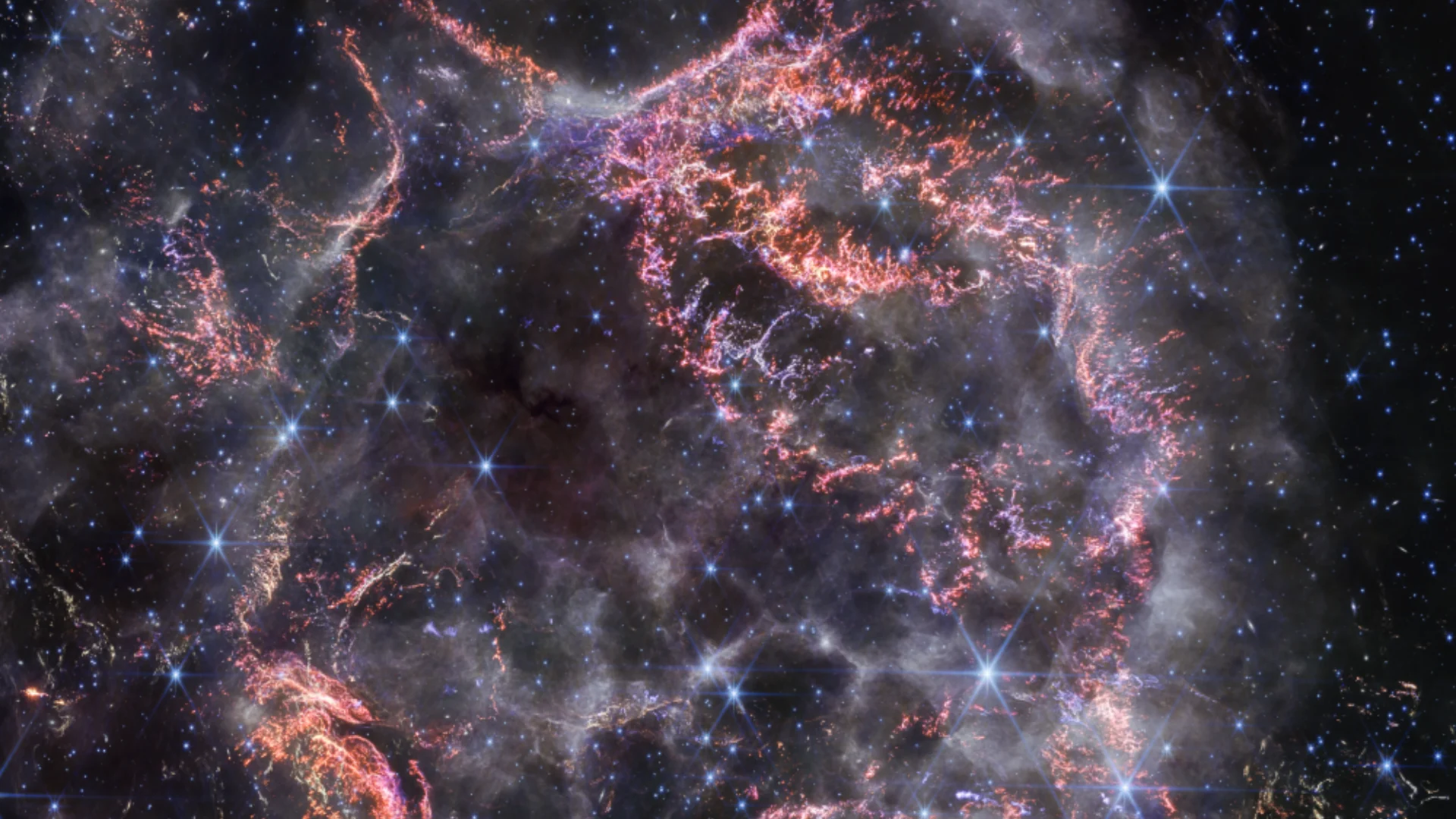
New NASA image features high-definition depiction of exploded star
NASA's James Webb Space Telescope's latest image comes just in time for the holiday season
In light of the season, NASA has unveiled a sparkly bauble of the cosmic variety.
It's the Cassiopeia A (Cas A) supernova remnant, featured in a brand-new image from NASA's James Webb Space Telescope.
Webb's Near-Infrared Camera (NIRCam) is to thank for this new, close-up look at Cas A.
Cas A has been under the cosmic microscope for a while, but a pair of images taken in recent months have provided new insight.
In April 2023, Webb's Mid-Infrared Instrument (MIRI) helped uncover new quirks in the inner shell of Cas A, starting this new, high-definition chapter of images, according to NASA.
RELATED: James Webb telescope reveals stunning new Jupiter views
The NIRCam, the latest image, and the MIRI image from earlier in the year revealed different aspects of Cas A.
Infrared light is invisible to our eyes, so NASA's image processors and a team of scientists translate these wavelengths of light into colours we can see. In the newest image, colours were assigned to different NIRCam filters, and those colours suggest different activities taking place.

This image provides a side-by-side comparison of supernova remnant Cassiopeia A (Cas A) as captured by NASA’s James Webb Space Telescope’s NIRCam (Near-Infrared Camera) and MIRI (Mid-Infrared Instrument) (NASA, ESA, CSA, STScI, D. Milisavljevic (Purdue University), T. Temim (Princeton University), I. De Looze (University of Gent))
Orange and pink
Look closely at the latest image; you'll spot bright orange and light pink clumps making up the inner shell. Webb's sharp eyes can pick up these tiny gas knots composed of sulphur, oxygen, argon, and neon.
Dust and molecules, which are the potential building blocks for new stars and planets, are also present.
Some debris filaments are so tiny that not even Webb can fully resolve them, measuring about 10 billion miles across or less. To put it in perspective, Cas A spans ten light-years or 60 trillion miles.
"With NIRCam's resolution, we can now see how the dying star absolutely shattered when it exploded, leaving filaments akin to tiny shards of glass behind," Danny Milisavljevic of Purdue University, the research team lead, says in a statement.
"It's really unbelievable after all these years studying Cas A to now resolve those details, which are providing us with transformational insight into how this star exploded."
Green Monster
There are several features picked up in the MIRI image that the new NIRCam image does not detect, and astronomers are still looking into why.
"The outskirts of Cas A's main inner shell, which appeared as a deep orange and red in the MIRI image, look like smoke from a campfire in the NIRCam image," NASA says.
"The dust in the circumstellar material being slammed into by the shockwave is too cool to be detected directly at near-infrared wavelengths but lights up in the mid-infrared. Also not seen in the near-infrared view is the loop of green light in the central cavity of Cas A that glows in mid-infrared, nicknamed the Green Monster by the research team."
Baby Cas A
NIRCam did, however, pick up a giant blob they call "Baby Cas A" because it looks like the offspring of the primary supernova.
But the 'baby' isn't a tiny supernova – it's a light echo. This happens when light from the star's explosion eons ago reaches and warms far-off dust, causing it to glow as it cools down. The 'baby's' proximity to Cas A is a point of interest for researchers because it's hanging out about 170 light-years behind the supernova remnant.
Webb's latest snapshot also reveals several other pint-sized light echoes scattered around.
The Cas A supernova remnant, our celestial showstopper, is nestled 11,000 light-years away in the Cassiopeia constellation. It went "kaboom" roughly 340 years ago, at least from our stargazing perspective.











